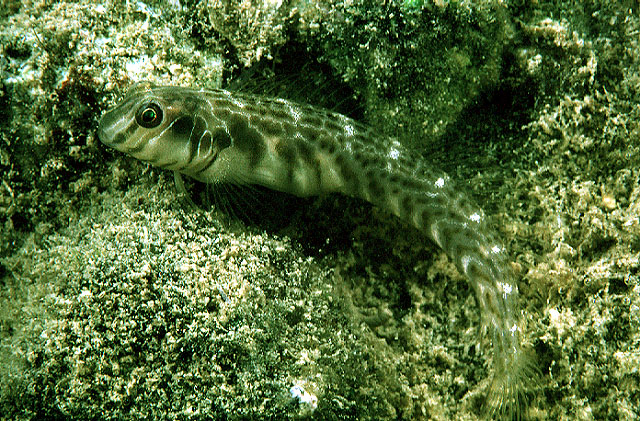| Blenniidae (Combtooth blennies), subfamily: Blenniinae |
| 5.6 cm SL (male/unsexed) |
|
reef-associated; brackish; marine; depth range 0 - 3 m |
| Indo-Pacific: Nicobar Islands to Samoa; north to Mariana Is; south to New Caledonia; Palau and eastern Caroline Islands The subspecies Omobranchus rotundiceps rotundiceps (Macleay 1881) occurs in Australia. |
|
Dorsal spines (total): 11-13; Dorsal soft rays (total): 18-21; Anal spines: 2-2; Anal soft rays: 20-23 |
| Adults inhabit mangroves and sheltered bays (Ref. 90102). Occur among corals, rocks, and rubble of shallow waters (Ref. 1602, 58302). Benthic (Ref. 58302). Oviparous. Eggs are demersal and adhesive (Ref. 205), and are attached to the substrate via a filamentous, adhesive pad or pedestal (Ref. 94114). Larvae are planktonic, often found in shallow, coastal waters (Ref. 94114). |
|
Least Concern (LC); Date assessed: 27 March 2009 Ref. (130435)
|
| harmless |
Source and more info: www.fishbase.org. For personal, classroom, and other internal use only. Not for publication.

